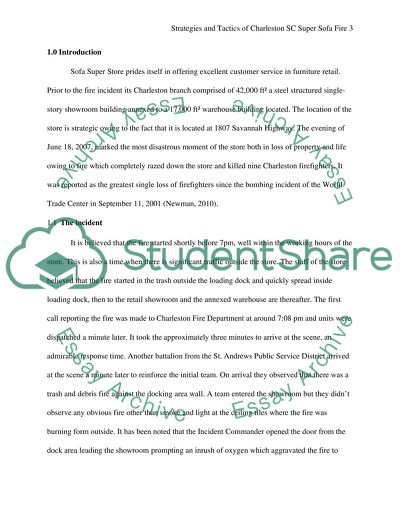Cite this document
(“Strategies and Tactics of Charleston SC Super Sofa Fire (June18,2007) Research Paper”, n.d.)
Strategies and Tactics of Charleston SC Super Sofa Fire (June18,2007) Research Paper. Retrieved from https://studentshare.org/miscellaneous/1584840-strategies-and-tactics-of-charleston-sc-super-sofa-fire-june182007
Strategies and Tactics of Charleston SC Super Sofa Fire (June18,2007) Research Paper. Retrieved from https://studentshare.org/miscellaneous/1584840-strategies-and-tactics-of-charleston-sc-super-sofa-fire-june182007
(Strategies and Tactics of Charleston SC Super Sofa Fire (June18,2007) Research Paper)
Strategies and Tactics of Charleston SC Super Sofa Fire (June18,2007) Research Paper. https://studentshare.org/miscellaneous/1584840-strategies-and-tactics-of-charleston-sc-super-sofa-fire-june182007.
Strategies and Tactics of Charleston SC Super Sofa Fire (June18,2007) Research Paper. https://studentshare.org/miscellaneous/1584840-strategies-and-tactics-of-charleston-sc-super-sofa-fire-june182007.
“Strategies and Tactics of Charleston SC Super Sofa Fire (June18,2007) Research Paper”, n.d. https://studentshare.org/miscellaneous/1584840-strategies-and-tactics-of-charleston-sc-super-sofa-fire-june182007.


